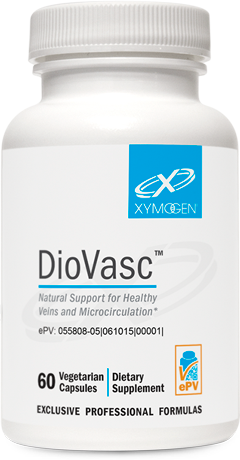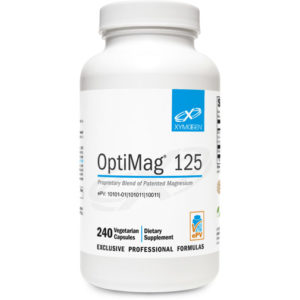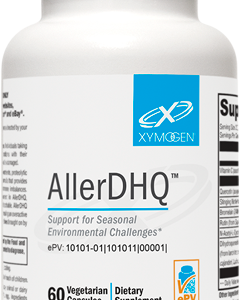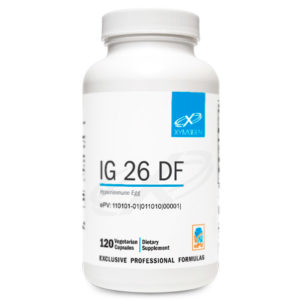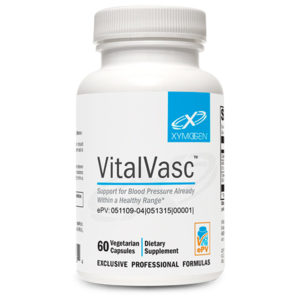Scientific Information/Data
Diosmin is a well-researched citrus flavonoid that has been utilized for decades to support healthy capillary and vein function as well as healthy microcirculation throughout the body. Diosmin fundamentally helps maintain the structure and function of the circulatory system, especially vein strength and competence.[1] The most promising research results come from a micronized purified flavonoid fraction comprising 450 mg of diosmin and 50 mg of hesperidin (hesperidin is a precursor to diosmin). This is the same ratio and dose found in each DioVasc™ capsule. The process of micronization (reducing particle size to less than two micrometers in diameter) improves diosmin absorption.*[2]
Micronized purified flavonoid fraction (MPFF) appears to support vein health by prolonging the normal effect that the catecholamine norepinephrine has on the vessel wall; and this, therefore, promotes venous tone.[3] Research also suggests that MPFF affects the synthesis of prostaglandins and free radicals, as well as leukocyte activation, trapping, and migration. Ultimately, MPFF supports antioxidant systems and eicosanoid balance.*[4-7]
Pharmacological and clinical studies suggest that MPFF—on its own and in conjunction with standard therapy—promotes normal lymph drainage, healthy capillary permeability, and favorable microcirculation. Multicenter, prospective, randomized, controlled studies document the effect of MPFF on maintaining healthy venous sufficiency.[8] Two randomized, double-blind, placebo-controlled studies conducted over a two-month period demonstrated the venotropic nature of DioVasc’s main component. Significant support of organic and functional parameters occurred along with significant support of venous hemodynamics.[9] Some studies indicate that favorable results can be achieved within two hours of administration.*[10]
A review of the literature suggests that health-related quality-of-life parameters were found to improve with the use of MPFF and were associated with the formula’s support of microcirculation and vein function.[2] A single-center, double-blind, placebo-controlled study suggested that MPFF had a positive and protective effect on five study variables (red blood cell aggregation, red blood count, microcirculatory blood flux, and amplitude and frequency of vasomotion).[11] A double-blind placebo-controlled trial of MPFF over a six-week period suggested that the formula, administered twice daily, significantly (p <0.001) supported capillary structure and health and was well tolerated throughout the study.[12] A double-blind randomized study of 104 subjects over a three-month period revealed that MPFF at various doses (500 mg, 1000 mg, or 2000 mg per day) significantly supported transcutaneous oxygen pressure and venous competence.*[13]
A meta-analysis of five prospective, randomized, controlled studies employing a total of 723 subjects suggested that MPFF promoted healthy tissue integrity when combined with conventional therapy (compression and local care).[14,15] Similar results were obtained in a multicenter, double-blind, randomized, controlled study of 107 individuals.*[16]
The worldwide RELIEF program (Reflux assEssment and quaLity of lIfe improvEment with micronized Flavonoids) studied the effects of MPFF on more than 5000 participants in 23 countries. A variety of subjects taking MPFF over a six-month period showed clinically significant improvements that indicated MPFF’s supportive effect on microcirculation and vein health and function. These improvements continued throughout the study.*[17]
Placebo-controlled human trials support the use of MPFF for the maintenance of healthy metabolic parameters, microcirculation, fluid balance, lymph system function, and albumin retention.[18-20] Results suggest that MPFF specifically supports normal capillary filtration, lymphatic albumin resorption, and fluid balance at the cellular level. Research on MPFF suggests that its positive effects may be extended to various parts of the body.*[21,22]
Ongoing animal studies suggest that diosmin, the major component found in MPFF, significantly supports blood glucose and insulin levels already within the normal range and exerts favorable effects on maintaining healthy serum hemoglobin.[23,24] Results from a double-blind placebo-controlled study support the use of MPFF for maintaining healthy glucose metabolism in humans as well.*[25]
References
- Monograph. Diosmin. Altern Med Rev. 2004 Sep;9(3):308-11. [PMID: 15387721]
- Lyseng-Williamson KA, Perry CM. Micronised purified flavonoid fraction: a review of its use in chronic venous insufficiency, venous ulcers and haemorrhoids. Drugs. 2003;63(1):71-100. [PMID: 12487623]
- Pitsch F. Recent guidelines in chronic venous disease: the place of Daflon 500 mg. Phlebolymphology. 2011;18:24-29. http://www.phlebolymphology. org/2011/01/recent-guidelines-in-chronic-venous-disease-the-place-of-daflon-500-mg/. Accessed October 12, 2012.
- Bergan JJ, Schmid-Schönbein GW, Takase S. Therapeutic approach to chronic venous insufficiency and its complications: place of Daflon 500 mg. Angiology. 2001 Aug;52 Suppl 1:S43-7. [ PMID: 11510596]
- Smith PD. Neutrophil activation and mediators of inflammation in chronic venous insufficiency. J Vasc Res. 1999;36 Suppl 1:24-36. [PMID: 10474048]
- Korthui RJ, Gute DC. Anti-inflammatory actions of a micronized, purified flavonoid fraction in ischemia/reperfusion. Adv Exp Med Biol. 2002;505:181-90. [PMID: 12083462]
- Jean T, Bodinier MC. Mediators involved in inflammation: effects of Daflon 500 mg on their release. Angiology. 1994 Jun;45(6 Pt 2):554-9. [PMID: 8203787]
- Ramelet AA. Clinical benefits of Daflon 500 mg in the most severe stages of chronic venous insufficiency. Angiology. 2001 Aug;52 Suppl 1:S49-56. [PMID: 11510597]
- Laurent R, Gilly R, Frileux C. Clinical evaluation of a venotropic drug in man. Example of Daflon 500 mg. Int Angiol. 1988 Apr-Jun;7(2 Suppl):39-43. [PMID: 3053942]
- Tsouderos Y. Are the phlebotonic properties shown in clinical pharmacology predictive of a therapeutic benefit in chronic venous insufficiency? Our experience with Daflon 500 mg. Int Angiol. 1989 Oct-Dec;8(4 Suppl):53-9. [PMID: 2698902]
- Le Dévéhat C, Khodabandehlou T, Vimeux M, et al. Evaluation of haemorheological and microcirculatory disturbances in chronic venous insufficiency: activity of Daflon 500 mg. Int J Microcirc Clin Exp. 1997;17 Suppl 1:27-33. [PMID: 9477042]
- Galley P, Thiollet M. A double-blind, placebo-controlled trial of a new veno-active flavonoid fraction (S 5682) in the treatment of symptomatic capillary fragility. Int Angiol. 1993 Mar;12(1):69-72. [PMID: 8376915]
- Belcaro G, Cesarone MR, de Sanctis MT, et al. Laser Doppler and transcutaneous oximetry: modern investigations to assess drug efficacy in chronic venous insufficiency. Int J Microcirc Clin Exp. 1995;15 Suppl 1:45-9. [PMID: 8748889]
- Coleridge-Smith P, Lok C, Ramelet AA. Venous leg ulcer: a meta-analysis of adjunctive therapy with micronized purified flavonoid fraction. Eur J Vasc Endovasc Surg. 2005 Aug;30(2):198-208. [PMID: 15936227]
- Smith PC. Daflon 500 mg and venous leg ulcer: new results from a meta-analysis. Angiology. 2005 Sep-Oct;56 Suppl 1:S33-9. [PMID: 16193225]
- Guilhou JJ, Dereure O, Marzin L, et al. Efficacy of Daflon 500 mg in venous leg ulcer healing: a double-blind, randomized, controlled versus placebo trial in 107 patients. Angiology. 1997 Jan;48(1):77-85. [PMID: 8995348]
- Jantet G. Chronic venous insufficiency: worldwide results of the RELIEF study. Reflux assEssment and quaLity of lIfe improvEment with micronized Flavonoids. Angiology. 2002 May-Jun;53(3):245-56. [PMID: 12025911]
- Valensi PE, Behar A, de Champvallins MM,et al. Effects of a purified micronized flavonoid fraction on capillary filtration in diabetic patients. Diabet Med. 1996 Oct;13(10):882-8. [PMID: 8911782]
- Valensi P, Behar A. Clinical implications of impaired microcirculation. Int Angiol. 1995 Sep;14(3 Suppl 1):26-31. [PMID: 8919261]
- Behar A, Valensi P, de Champvallins M, et al. Capillary filtration and lymphatic resorption in diabetes. Application to the pharmacodynamic activity of Daflon 500 mg. Int Angiol. 1989 Oct-Dec;8(4 Suppl):27-9. [PMID: 2632646]
- Buckshee K, Takkar D, Aggarwal N. Micronized flavonoid therapy in internal hemorrhoids of pregnancy. Int J Gynaecol Obstet. 1997 May;57(2):145-51. [PMID: 9184951]
- Cospite M. Double-blind, placebo-controlled evaluation of clinical activity and safety of Daflon 500 mg in the treatment of acute hemorrhoids. Angiology. 1994 Jun;45(6 Pt 2):566-73. [PMID: 8203789]
- Pari L, Srinivasan S. Antihyperglycemic effect of diosmin on hepatic key enzymes of carbohydrate metabolism in streptozotocin-nicotinamide-induced diabetic rats. Biomed Pharmacother. 2010 Sep;64(7):477-81. [PMID: 20362409]
- Srinivasan S, Pari L. Ameliorative effect of diosmin, a citrus flavonoid against streptozotocin-nicotinamide generated oxidative stress induced diabetic rats. Chem Biol Interact. 2012 Jan 5;195(1):43-51. [PMID: 22056647]
- Manuel y Keenoy B, Vertommen J, De Leeuw I. The effect of flavonoid treatment on the glycation and antioxidant status in Type 1 diabetic patients. Diabetes Nutr Metab. 1999 Aug;12(4):256-63. [PMID: 10782751]


